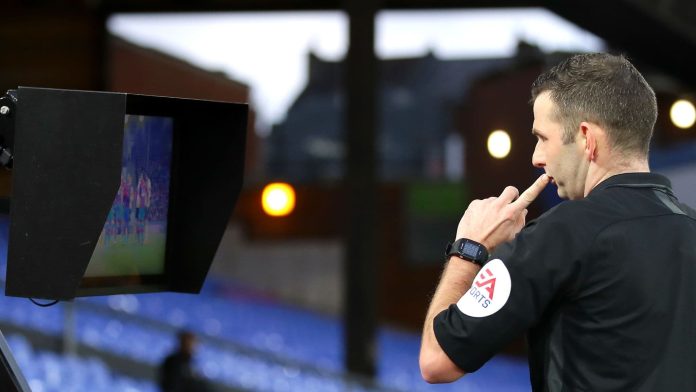Much has been made of the unrelenting football calendar, and its potentially harmful effects on player welfare. However, suggestions that the very nature of VAR leads to injuries have been floated by players themselves, so join us as we explore why that may be.
VAR Leads to Injuries Says PFA Chief
Maheta Molango, the chief executive of the Professional Footballers’ Association, has declared that key figureheads in charge of scheduling must make player welfare their number one priority.
At the time of writing, the Premier League has witnessed 196 injuries across 12 gameweeks, which is a marked increase of 15% compared with the previous four campaigns.
SportsLens recently took an in-depth look at some of the reasons why this alarming increase in injuries may have come about, with the added burden of increased stoppages, as well as the expansion of major tournaments at club and international level among a handful of suggestions.
However, Molango has suggested that VAR leads to injuries due to the nature of long stoppages. He cited an astonishing figure among Premier League players which indicates a 96% increase in hamstring injuries compared to last season alone, and 55% jump across a four-season average.
Speaking to the Mirror, he said: “We need to fully understand the impact of new rules, such as longer games and lengthy VAR stoppages in cold temperatures, on players. This is something we know they have expressed concern about.”
Why Could VAR Stoppages Be to Blame For Injuries?
As mentioned, VAR often leads to lengthy stoppages. According to Opta, these take around 73 seconds on average to resolve, but as evidenced by Jay Rodriguez’s disallowed goal against Bournemouth in October – the longest VAR resolution time ever in the Premier League – these can sometimes take up to five minutes.
That is a potential five-minute window for muscles to seize up – particularly in wintery conditions, the like of which will only get worse over the festive period. That of course is further compounded by December being the most relentless period for fixtures; for example, Manchester City will feature 10 times across all competitions between now and the end of 2023.
Back to what Molango said, however. He, along with the players that have already expressed concern, certainly have a case for VAR leading to injuries.
Activities that involve a lot of running and jumping such as football and basketball leave you open to injuries, but the NIH website adds that “sudden starts and stops place you at risk of a hamstring strain.” This would help to explain the sharp upsurge in reported injuries related to hamstrings.
The likes of Chelsea’s problematic full-back duo Ben Chilwell and Reece James have already experienced reoccurrences of previous hamstring problems, with soft tissue injuries further exacerbated by intermittent movements and a general increase in workload.
Analytics FC worked out Premier League clubs lost over £70 million due to hamstring related injuries last season, with Chilwell – who missed over 25 games for Chelsea – among the most expensive individual players.
Former Sheffield United and Middlesbrough manager Neil Warnock recently put forward his suggested changes to VAR, which included a maximum 30-second resolution time. Although he didn’t cite its effect on player welfare, a cut-down on the length of VAR stoppages could be a welcomed by-product for players and viewers alike.
Add Sportslens to your Google News Feed!







